Gesso 101: What is Gesso and Where, why and how do I use it?
Gesso 101: What It Is and Why Your Journal Pages or Mixed Media Art Might Just Love It
Let’s talk gesso—that mysterious little bottle that lives on the art supply shelf, looking all official and important. If you’ve heard the word floating around in mixed media groups or craft videos and thought, “What in the world is gesso and why should I use it?”. I’m here to break it down for you! I get this question a lot when I teach and use this hard-working medium. I thought it’d be useful to take a deep dive into the details of all things Gesso for you!
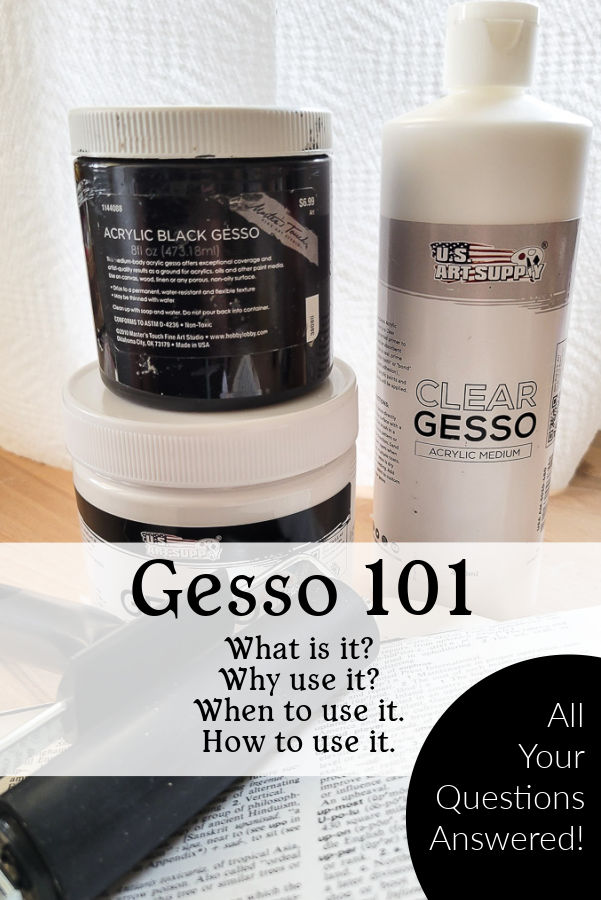
What Is Gesso?
Think of gesso as primer for your art. Just like you’d prime a wall before painting it, gesso preps your paper (or canvas or cardboard or wood) so it’s ready to handle all the creative layers you want to throw at it—paint, ink, glue, you name it. Think of it as Kilz Primer for mixed media. But it also is so much more, which is why it gets it’s own blog post, LOL!
It helps give “tooth” (aka a bit of texture or grip) so things like paint and pencil don’t just slide around. It can also protect your page from getting too soggy if you’re working with wet mediums.
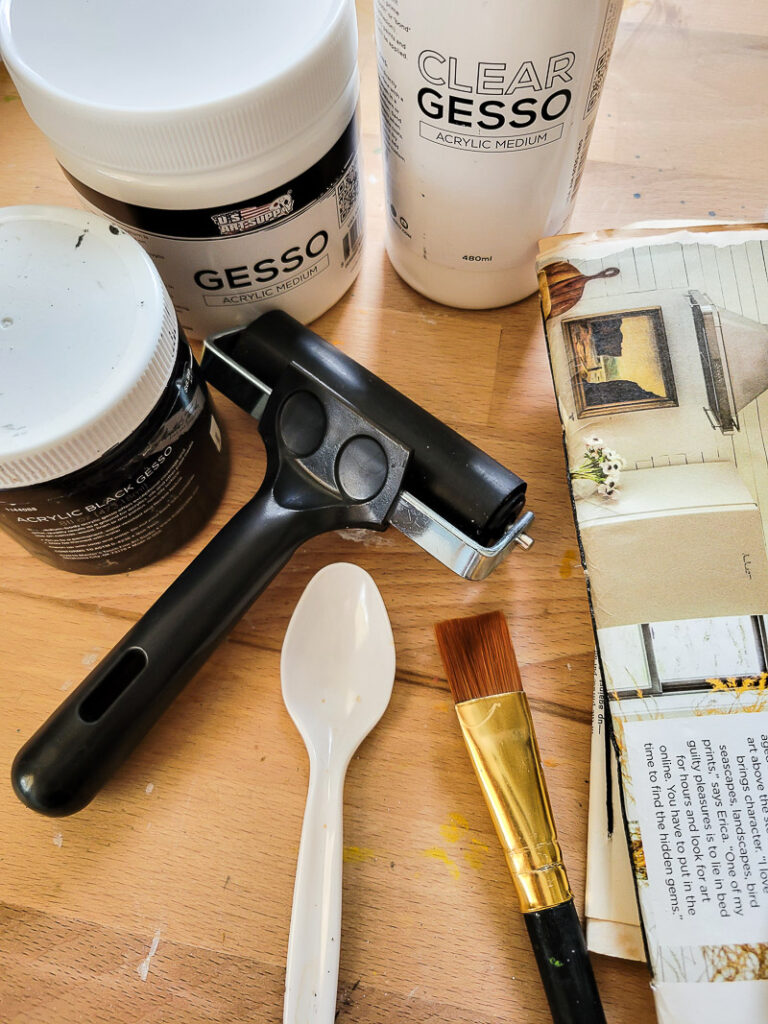
What is Gesso Made of?
- Acrylic Polymer (Binder)
This is what makes modern gesso flexible and sticky enough to hold onto your surface. It’s basically a type of plastic that dries clear and strong, helping everything stick together. - Calcium Carbonate (Chalk)
This gives gesso its slightly gritty texture. It’s what adds “tooth” so your paint or pencil grips instead of sliding around. It also gives gesso that matte, absorbent finish. - Pigment (Color)
- Titanium Dioxide for white gesso
- Carbon black for black gesso
- No pigment in clear gesso, so it dries translucent
That’s pretty much it! Brands might tweak their formulas with additives for texture or drying time, but those are the main players. You will want to play around with different brands because they do act slightly different; mainly, you will notice varying degrees of grit or tooth. It is a personal preference on which one works best for you!
Fun Fact BONUS:
Traditional gesso (used in classical art before acrylics were a thing) was made with glue from animal hide and chalk. It was super brittle and only worked on rigid surfaces like wood panels. Modern acrylic gesso is way more flexible and paper-friendly, which is why it’s perfect for art journaling and mixed media play. I love gesso over traditional acrylic paint in certain circumstances because of its flexibility. When you use it on journal pages (or a project that moves), it is more forgiving and less stiff!
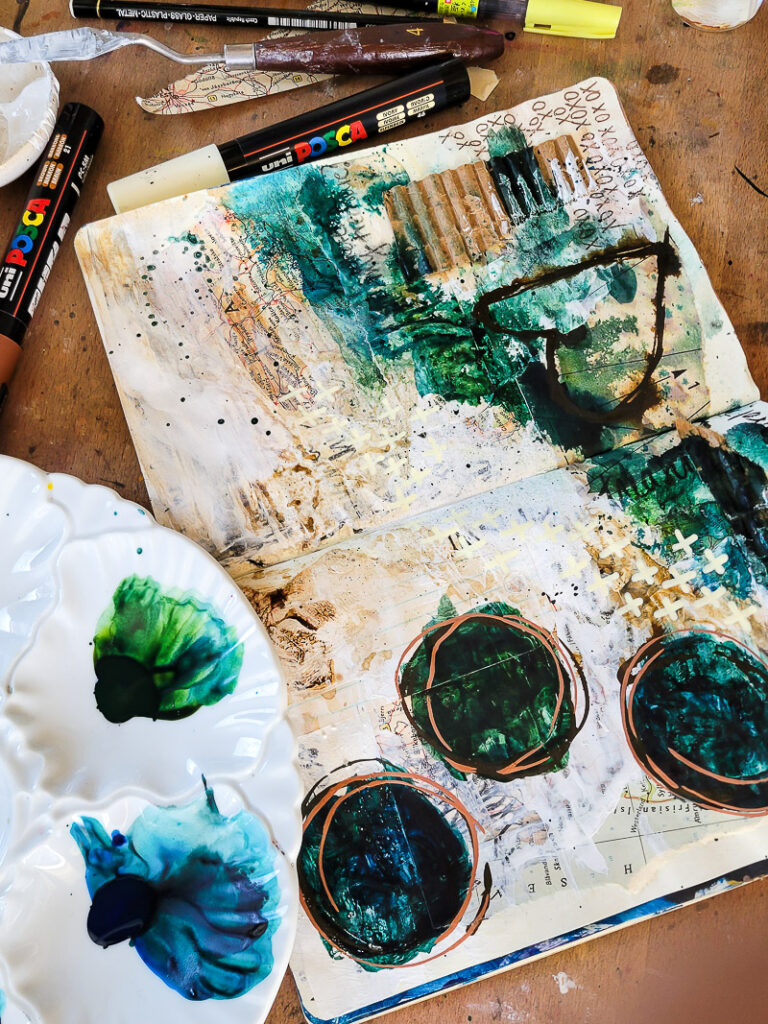
Why Should I Use It?
You don’t have to use gesso every time you make something. But here’s where it is most useful:
- Saves your paper from warping (especially thinner pages like in junk journals)
- Makes colors pop more (a white gesso base makes your paints brighter!)
- Gives grip for other materials (acrylic paint, watercolors, pastels, collage elements…)
- Lets you create cool textures (more on that in a sec!)
- Adds Body and stability to thin papers, especially if you create with vintage papers.
- It can act as a sealant to substrates.
- You can use it as a glue in wet mixed medium collage.
- A flexible alternative to acrylic paint in journaling.
If you’ve ever tried to paint on a glossy or super thin paper and it just soaked everything up or refused to blend—gesso can help!
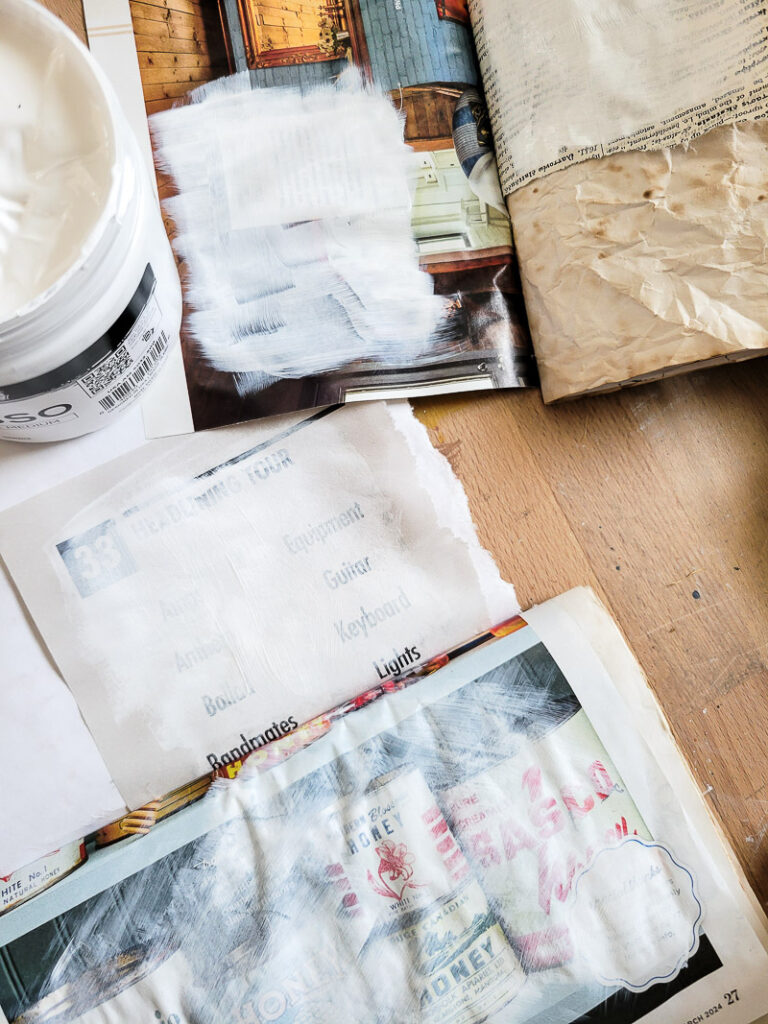
Types of Gesso: (Yes, there are Options!)
- White Gesso: The most common. It brightens and covers things up. Great for creating a fresh surface or toning down busy backgrounds.
- Black Gesso: Perfect for bold looks, metallic accents, or creating night skies and moody vibes. Full coverage medium to cover areas of your work.
- Clear Gesso: The invisible hero. It adds grip without covering up what’s underneath—like book pages, magazine clippings, or vintage ephemera you still want to see. Plus it can prevent smudging or smearing of mediums!
- Custom: You can tint Gesso with acrylic paint to create a custom color!
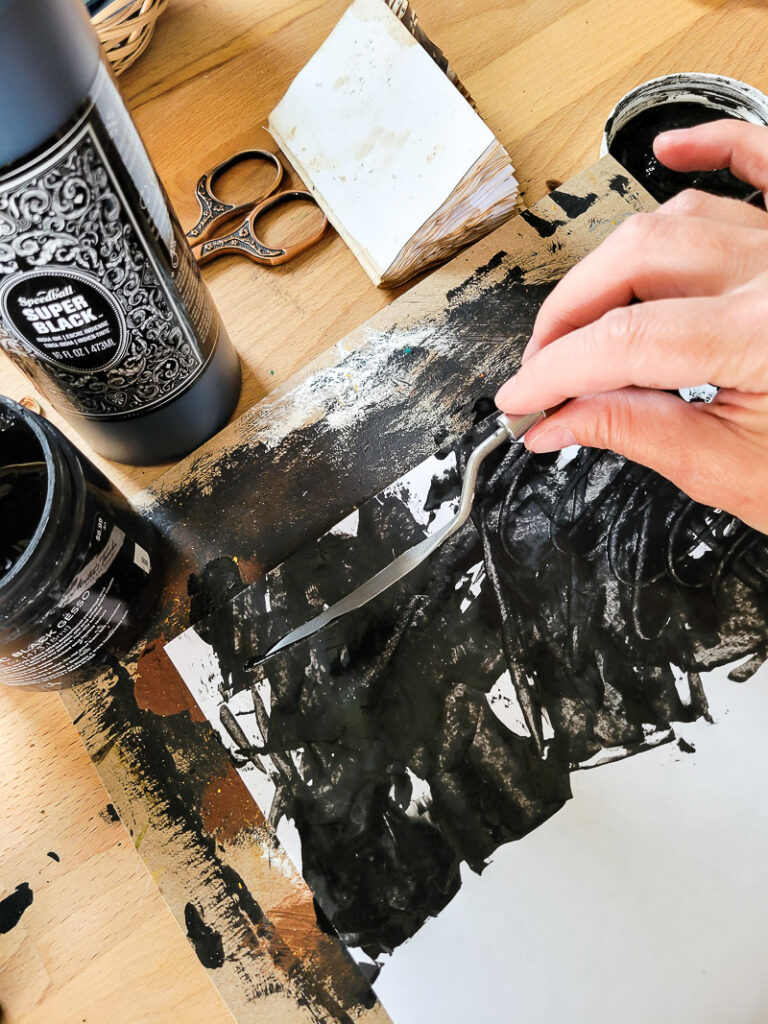
How to Use Gesso
Here are a few options, but play around with it and see where it fits best in your personal art practice.
- Scoop or squirt a little out—a little goes a long way. I personally love a squirt bottle so I don’t contaminate the jar with other colors or mediums, I’ve learned that from experience.
- Apply it with a brush, sponge, palette knife, your finger, or even an old hotel card or credit card for a smoother look. I often use my finger – the perfect tool if you ask me!
- Let it dry completely (unless you’re going for a messy, textured thing—then go wild!). It is typically thicker and will take a minute! You can use a heat tool if you’re impatient (like me).
- Layer on top with paint, collage, markers, whatever your heart desires. Don’t let it dry and use it as a glue in your collage projects.
- BONUS – you can sand gesso! That’s right, if you get it on thick or uneven in a spot that needs to be smooth, lightly sand it for a new finish.
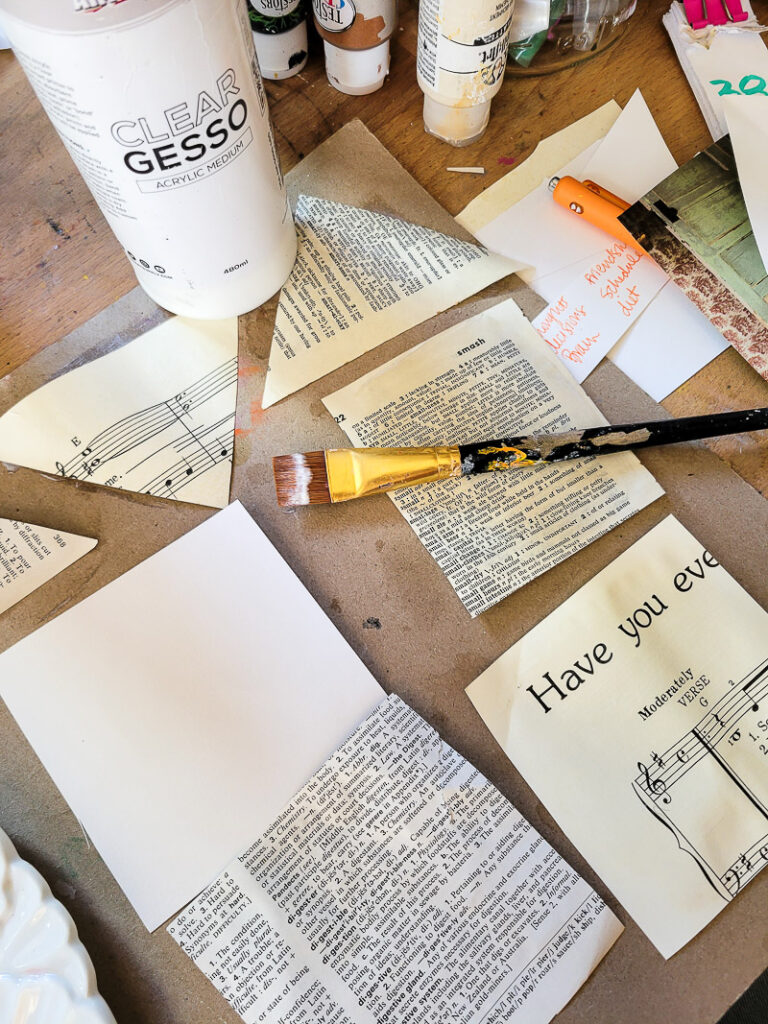
When Should You Use It?
Here are a few common scenarios:
- Your page feels too thin or fragile.
- Your paper is soaking up your working medium.
- You want to layer without smudging or smearing, just use a light hand and caution when applying gesso, it is a wet medium and can smear your substrate if not applied cautiously.
- You’re working on glossy or non-porous surfaces (like cereal boxes, magazine pages, and junk mail!).
- You want to soften a busy background or printed page. It’s perfect to push back parts of a project, cover lightly or completely – it is versatile, based on the amount you use.
- You need a “clean slate” without using fresh white paper.
- Clear gesso can also be used over inkjet prints if you want to paint or collage on top without smearing them. Just make sure to test it first!
- Try it in your stamping techniques to build up textured patterns and layers!
- Stencil with it for a raised effect, you can layer it and build gesso up for a thicker result.
Don’t bother when:
- You’re doing dry collage (no wet mediums).
- You love the look of raw paper. Honestly – sometimes raw or old papers are much better NOT covered!
- You’re just playing and don’t mind a little warp here or there.
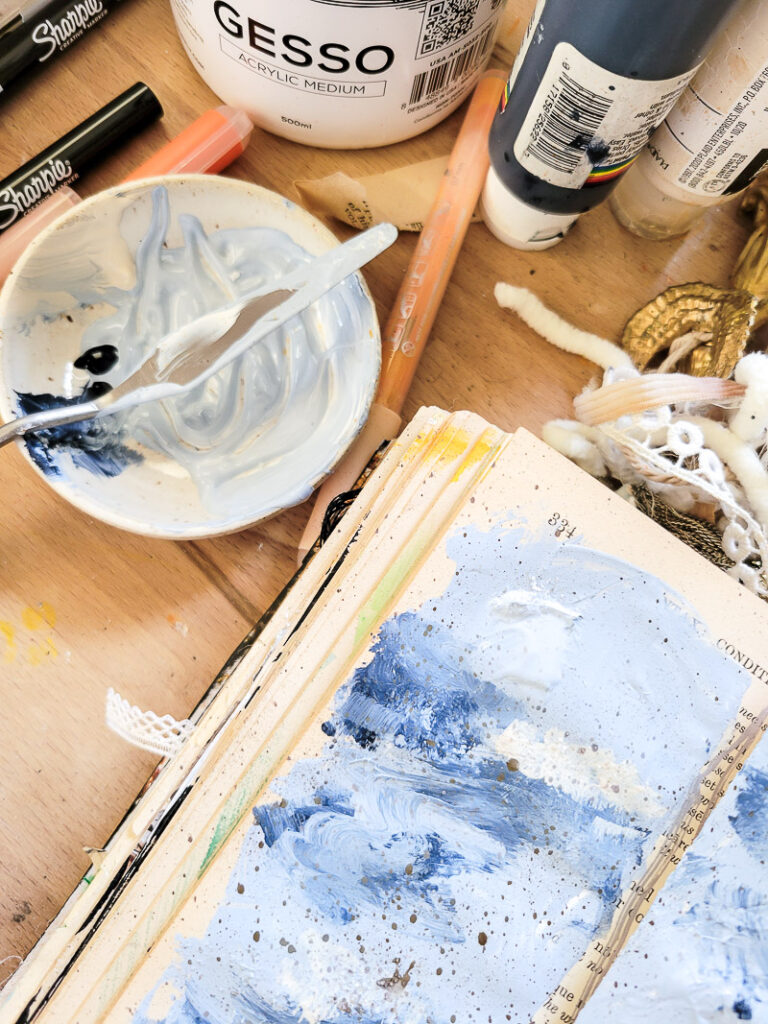
Mix It For More Options
Gesso isn’t just for priming—you can actually play with it!
- Add acrylic paint to tint your gesso any color you like.
- Mix in sand, beads, or baking soda for texture.
- Use stencils or stamps while it’s wet for cool patterns. (with texture added it’s extra fun!)
- Layer it thin or thick depending on your goal.
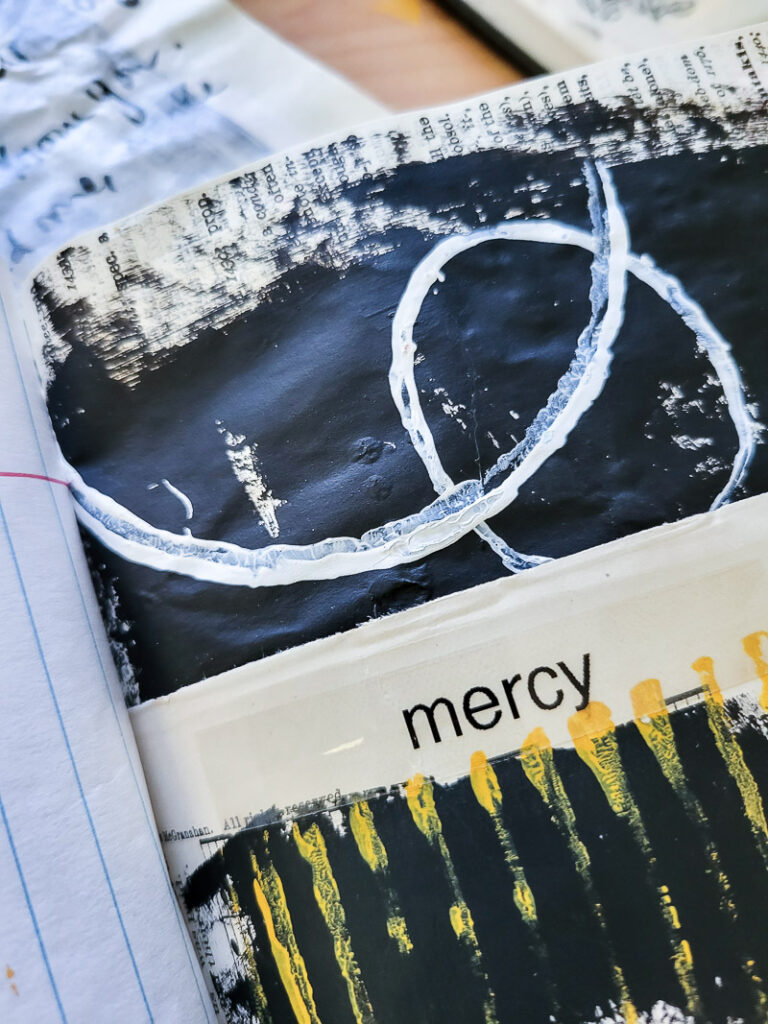
Where Can You Use Gesso? (Basically… Everywhere)
One of the best things about gesso? It’s super versatile. You can throw it on just about anything and suddenly you’ve got an art surface ready to go. Here’s where it really shines (these may not all be for journaling, but who knows, maybe!?):
- Canvas: The classic! Most canvases come pre-gessoed, but adding a couple extra layers gives you a smoother, more custom surface to work on.
- Cardboard & Cereal Boxes: Gesso turns brown cardboard into a sturdy background that can handle paint, collage, stamping—you name it. A personal favorite of mine!
- Book Pages: Doing altered books or junk journals? Gesso helps thicken fragile pages and tones down the text so you can paint or write right on top. Perfect for vintage papers and ephemera.
- All Kinds of Paper:
- Watercolor paper – Already strong, but gesso adds more grip and texture if you’re layering stuff.
- Mixed media paper – Gesso makes it extra ready for heavy paints or collage.
- Printer paper, scrapbook paper, junk mail – Gesso gives them a second life by making them less flimsy and more paint-friendly.
- Wood: Raw wood soaks up gesso like a sponge. Perfect for prepping wooden panels, plaques, or even popsicle sticks for paint or collage.
- Fabric: Yep, you can totally use gesso on fabric! It stiffens it up a bit and gives you a surface that’s easier to paint on—great for art cloth, canvas bags, or old linens.
- Metal, Plastic & Glass: Gesso can work on slick surfaces too, but you’ll want to rough them up a bit first (a little sandpaper goes a long way) and maybe use a primer underneath for extra grip.
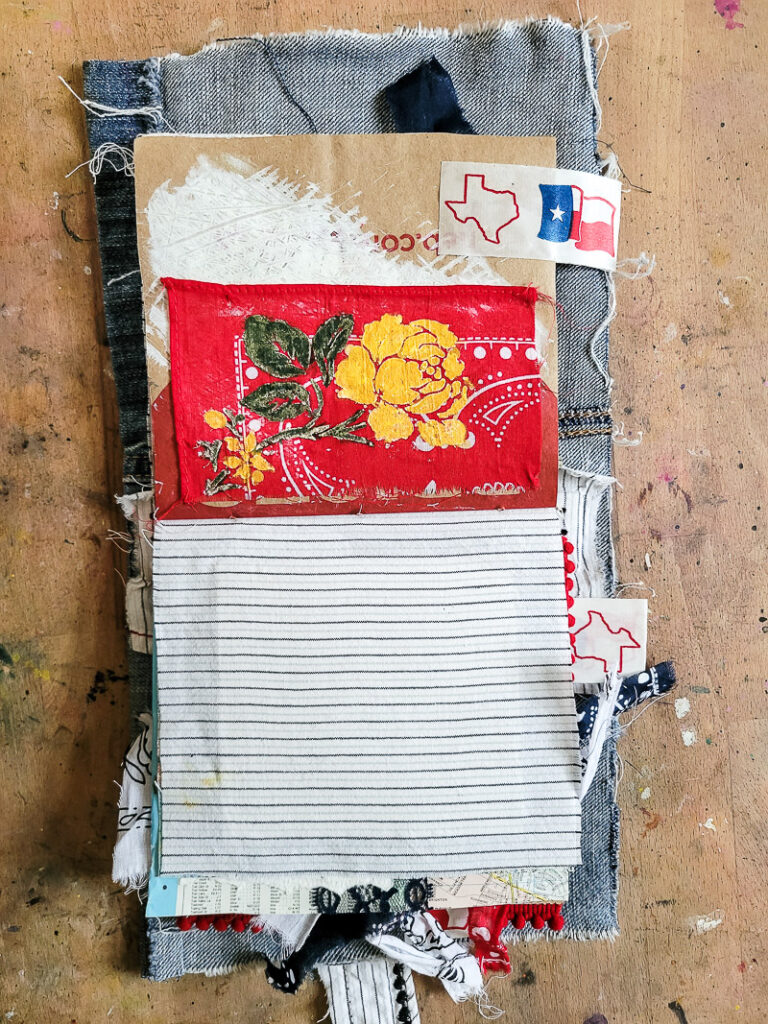
WHere Do You Get Gesso?
You can find Gesso in just about any art supply store, from a small local store to a big box store like Hobby Lobby or Michaels. I order mine from Amazon, because I live a good way from any one of those stores! Again, remember to try a few and see what works best for your style.
- This is the Clear I use.
- I like this white, I use the black in this one too, but it is a little thin for me. I will be trying a new one once this runs out!
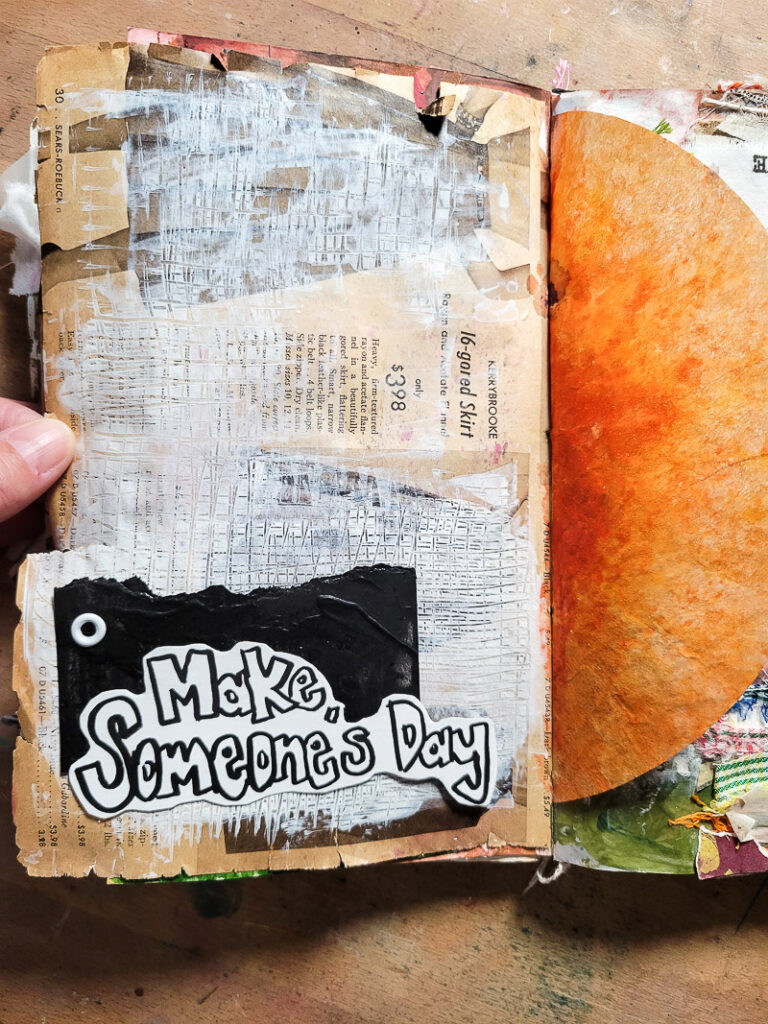
Gesso In A NUtshell
Gesso might sound fancy, but it’s really just your helpful sidekick in the creative process. Whether you’re making junk journals, layering paints in a mixed media spread, or prepping an old book page for something new—gesso has your back.
So next time you’re crafting, try a little swipe of it and see what happens. No rules, just play. Your paper won’t know what hit it—in the best way. Tell me in the comments- how do you use gesso and what are your best tips?
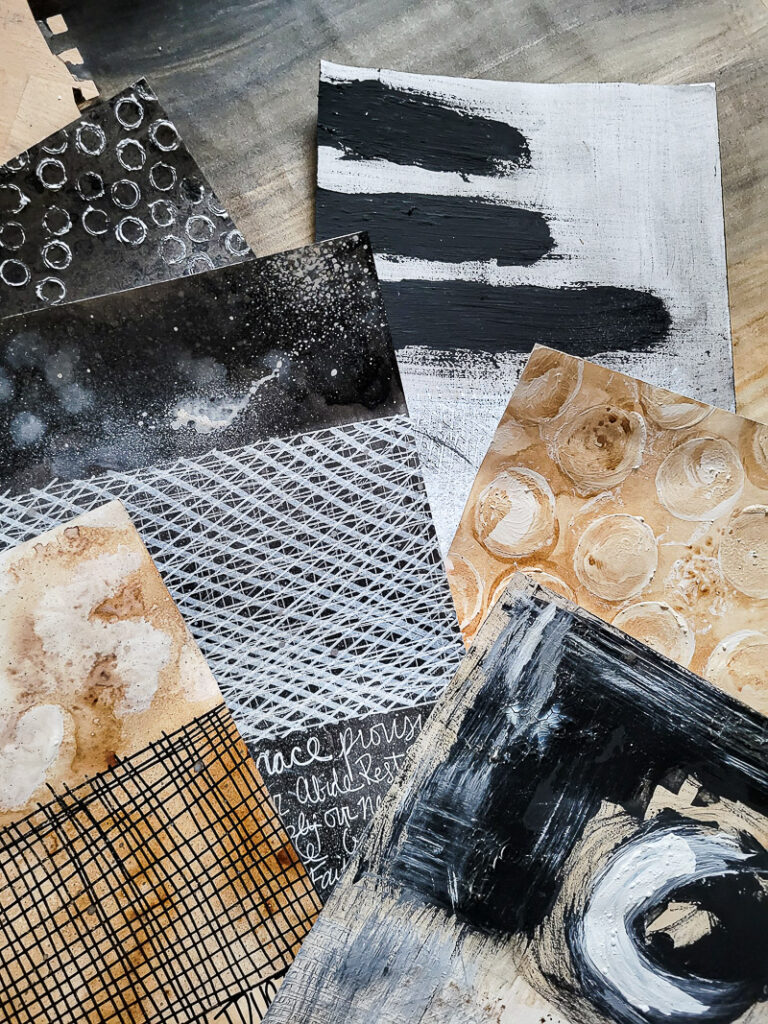

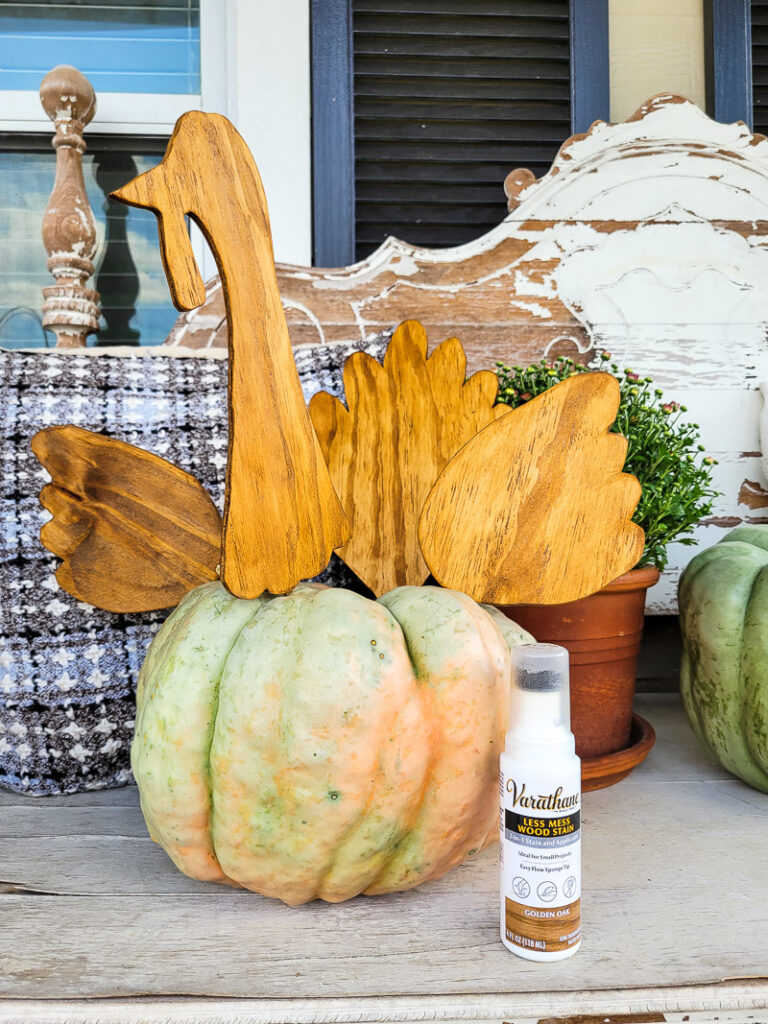
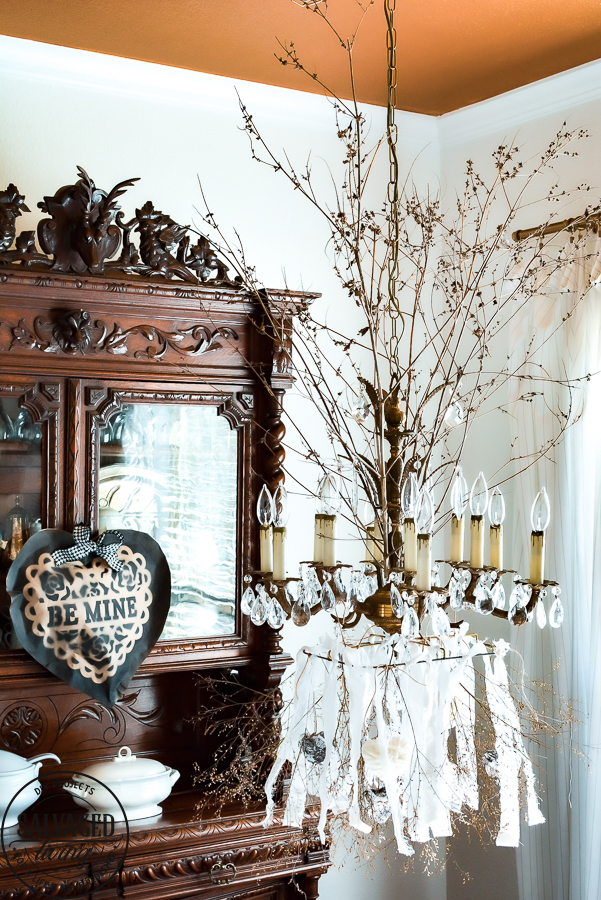
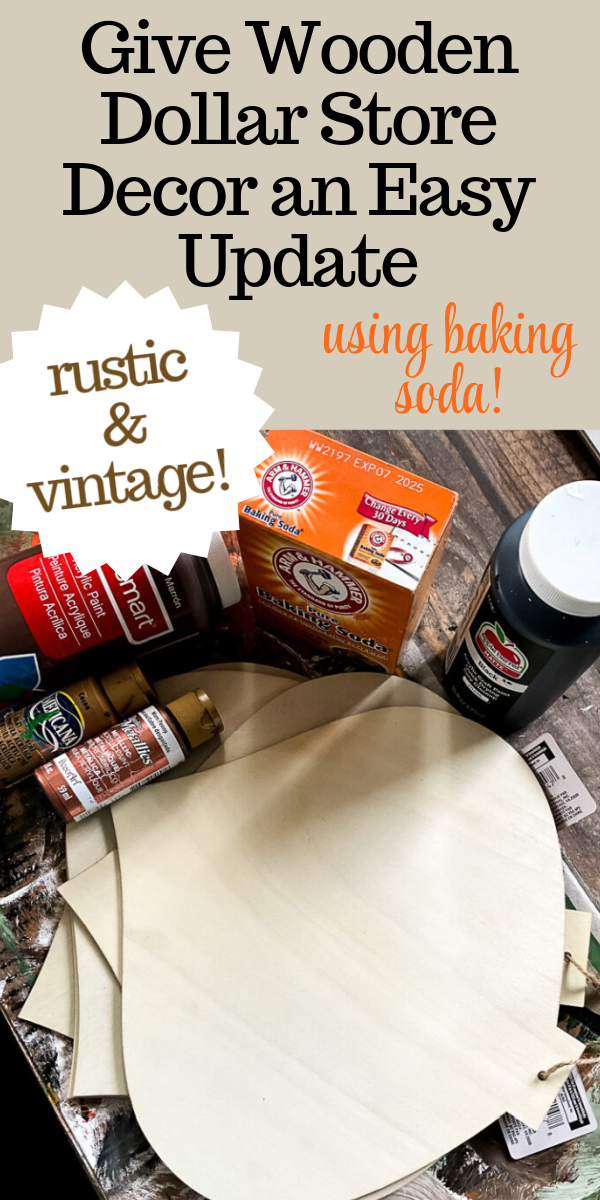


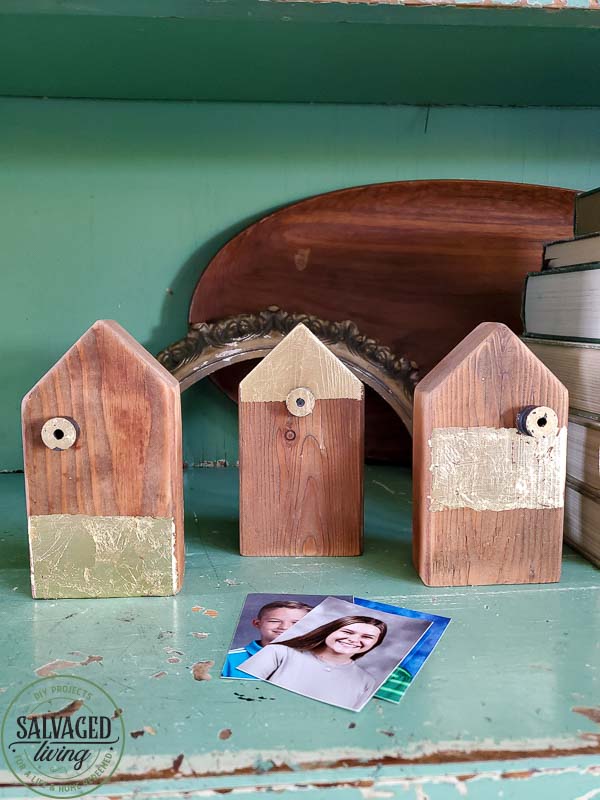
The article cleared up so much for me
Thank you
yayyyyyy that’s awesome!
Thank you for the info on Gesso. I took your Faithfest class but have yet stepped out to try. I love journaling but have never tried Bible art journaling and think that is awesome! Need to allow myself time and go over videos again and get started
woohoo – Can’t wait to see what you create!
Can this be used to adhere music to a canvas, without the music warping/wrinkling? Does this work better than Mod Podge for that specific job? I find music to often wrinkle, and I’m hoping gesso may be the solution I’ve been looking for.
I don’t think it is completely without wrinkles, but it does seem to be less wrinkly – i think it has less moisture in it so it seems to do a little better! It’s worth a shop for sure! Have you tried a glue stick? they often work wonders!